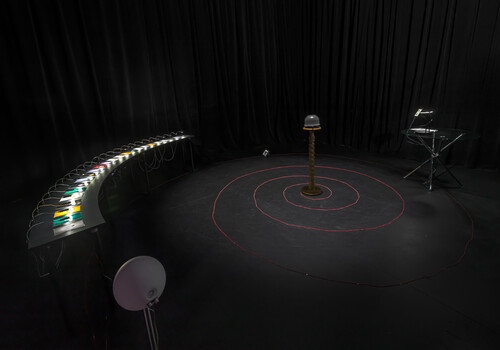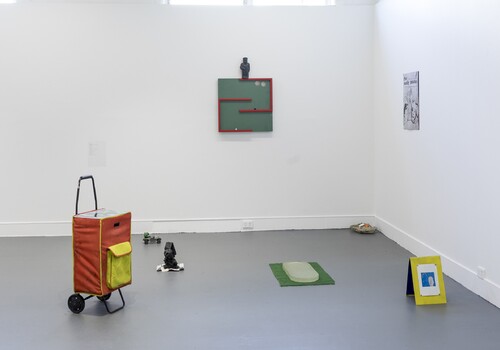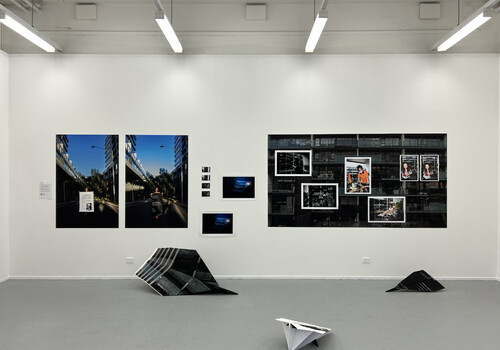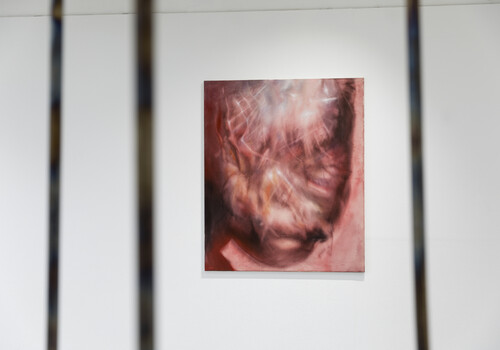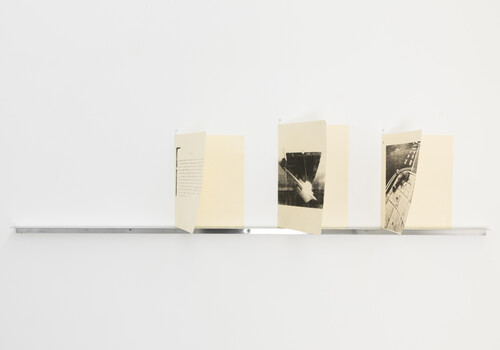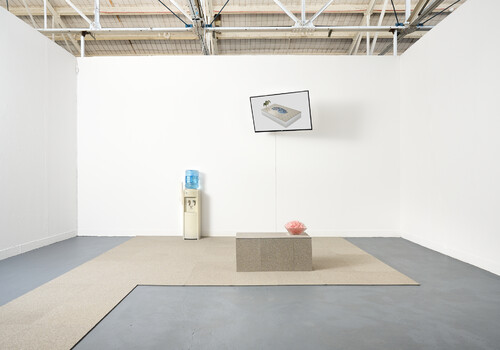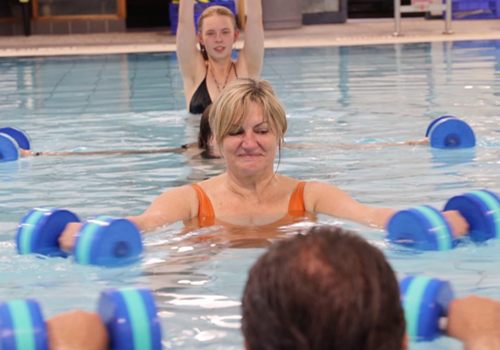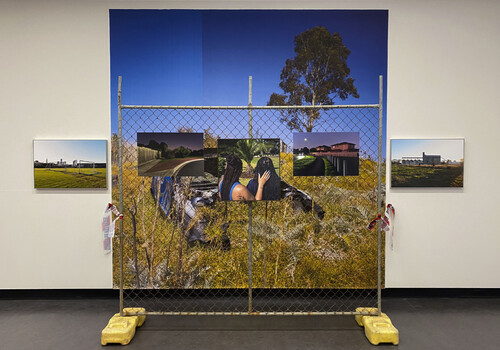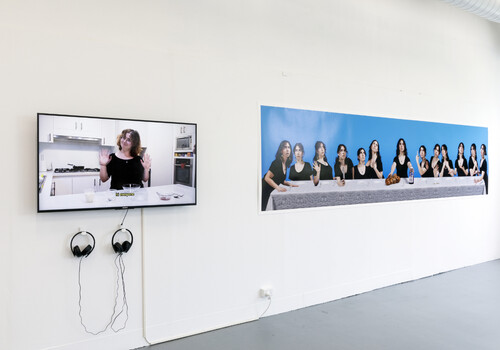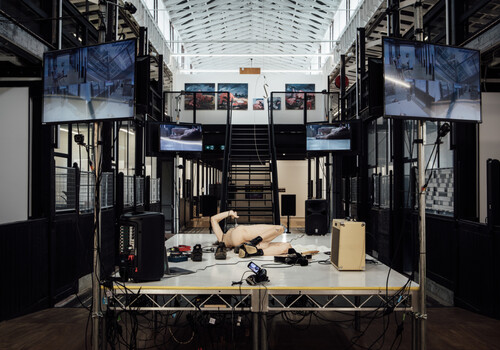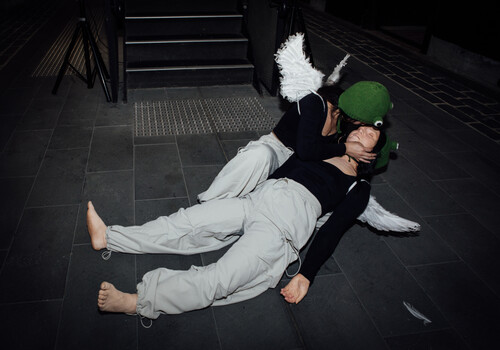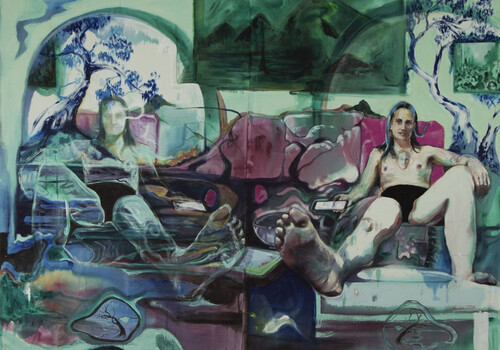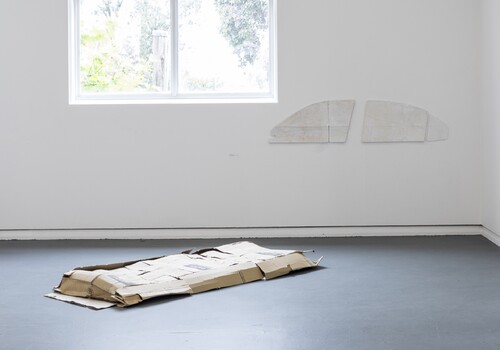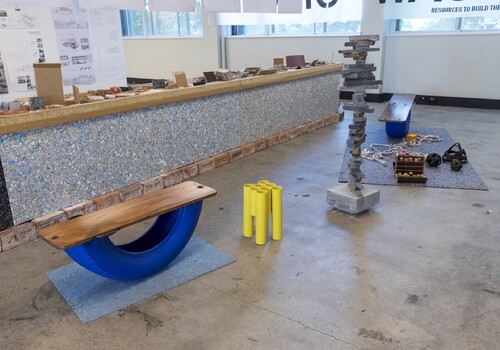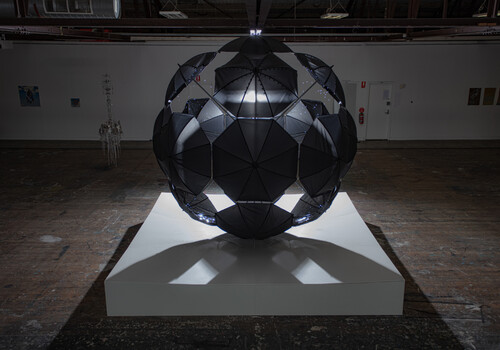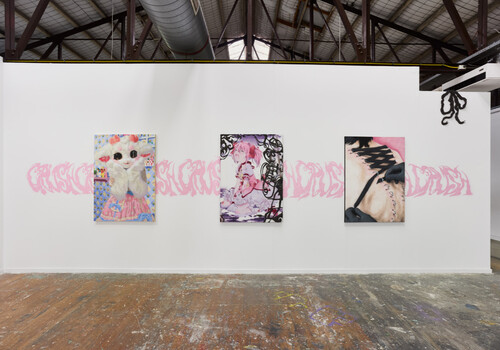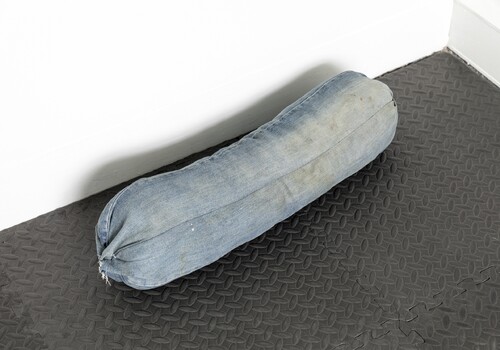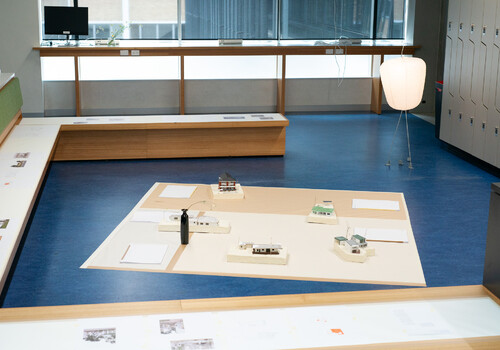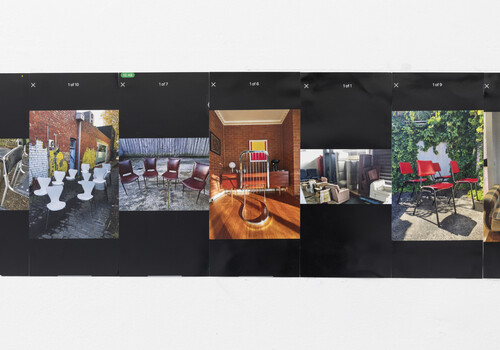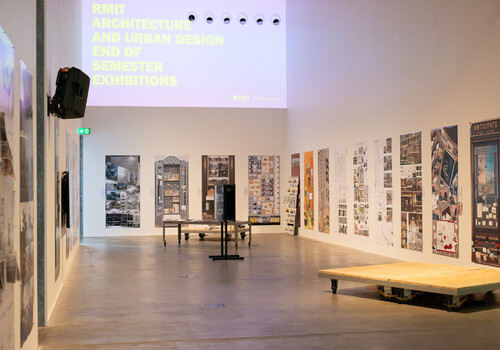Bachelor of Fine Art (Honours), MADA
By Amber Stephens
Body + _____ = Collective Memory. What is required to solve this equation? First, we must understand the elements of the equation presented to us. A body of some form, physical or metaphorical, is required to hold a collective memory shared within a community or an individual. This could be a space, a place, or an unknown reality. But while the body is a space that holds memories, we need a vessel that physically creates memories, contemplates these bodies, and turns them into art. Looking between the artworks of Monash University Fine Art (Honours) graduates Juliet Phraser and Kostas Pavlidas, I saw variations on three themes: embodiment, collective memory, and the unknown.
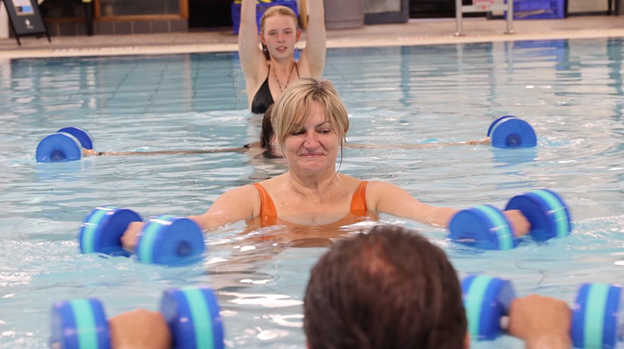
Remnants of chlorine, childhood laughter, and the looming smell of the pool canteen fill the space that holds Phraser’s three works. Her graduate show installation includes video work Warm Water (2023), cast work Dumbbells (2023), and laser cut engraving Bodyclock (2023). Opening, Warm Water begins: “There are four key phases during the backstroke armstroke: the entry, the catch, the push, the recovery.” These four key phrases guide the rest of the video, showing a collective of people within the pool holding colourful pool dumbbells that guide their movements. The way the group floats within the pool is almost meditative; their soft movements glaze through the water, almost like one individual within a larger body that holds them. As they collectively guide the water’s movement, Phraser voices the history of her mother, father, and nanny—exploring how each contributed to her own personal growth. Together, the pool users push and pull the energy and memories that Phraser presents, showcasing not only the collective that is behind one individual’s growth but also how we are strengthened through collective presence as an individual.
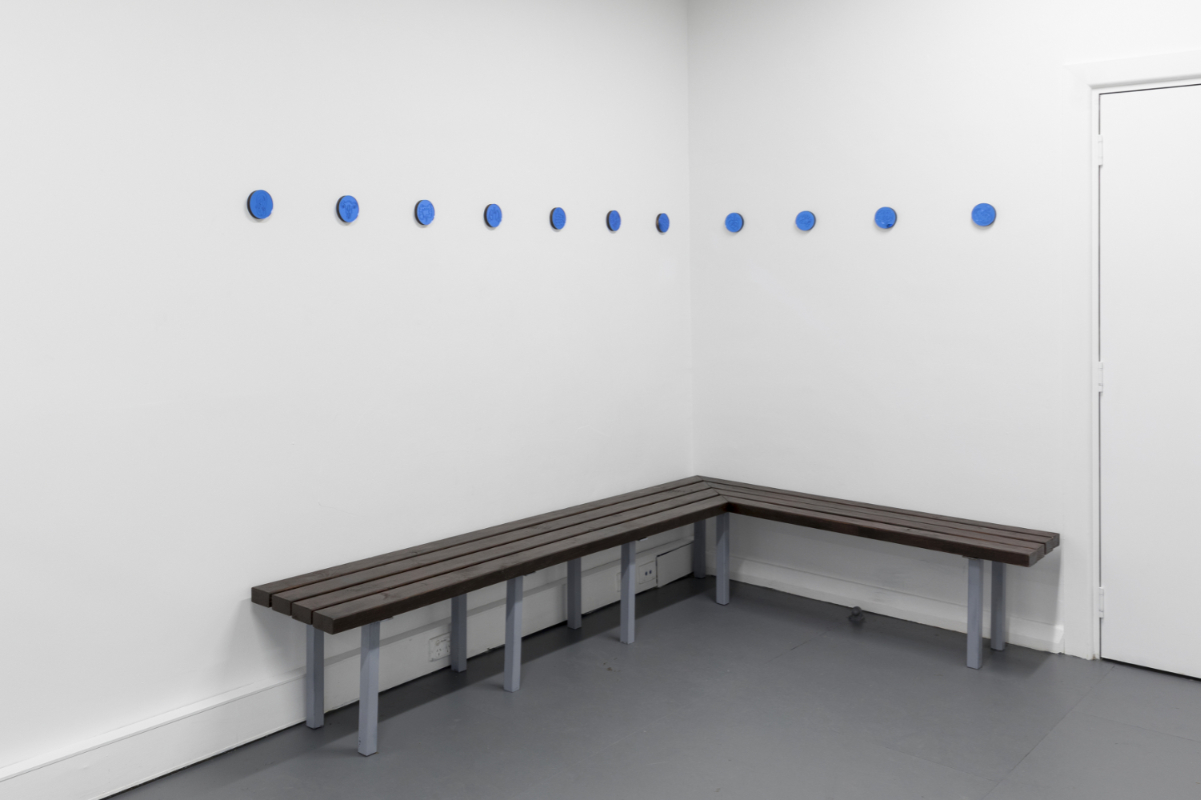
Phraser’s work contributes to conversations present in recent artworks considering the pool’s role within Australian society. Notably, the theme was explored with the exhibition The Pool, presented by the NGV in 2017-18, and in Alicia Frankovich’s The Eye, presented at the Brunswick Baths in the Take Hold of the Clouds exhibition in 2022. The pool is often seen as a place where the communal and personal can intersect as a place for gathering, sharing, and leisure. It is an intrinsically public space. Alternatively, other artists in the exhibition turn their attention to more private, intimate experiences and organic forms. Pavlidas, for example, turns their attention to more private, intimate experiences (perhaps similarly to the work of other recent Monash Fine Art Honours graduates like Caesar Florence-Howard, and artists associated with Asbestos Gallery).
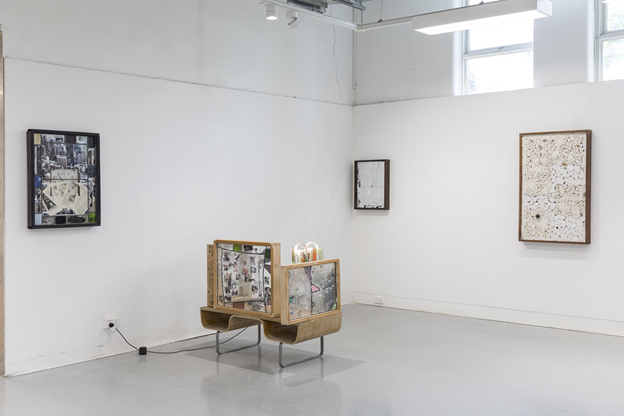
Pavlidas’s photographs and paintings (2023) allow me to contemplate what it means for potentially discarded or shattered memories to be embraced, and possibly collected. I immediately feel welcomed by a lit butterfly seemingly being held upon a roughly constructed box crafted from stained glass, half-hammered nails, and scattered memories. Yet the glass butterfly sticks out to me, reminding me of my childhood through a butterfly window decal that I adored. Within this blank box are photographs that have been torn up to become indecipherable, like frayed scenes of our adolescence. Some seem to be heads, figures, or people. Others seem to be objects that surround these figures. Viewed together, the lit, youthful butterfly and unfinished, rough adolescence swirl into one for me. Afterwards, smeared, painted frames conclude my individualistic memory and thoughts, accompanying their shared existence through their cracks. Their presence trickles with the hope of a shared future, one embodying a rainbow—maybe an unachievable future, one we dreamed of chasing as children—and another a green pasture. These scattered paintings feel reminiscent of how we begin a collective memory by collecting moments of joy, despair, pleasure, and melancholy.
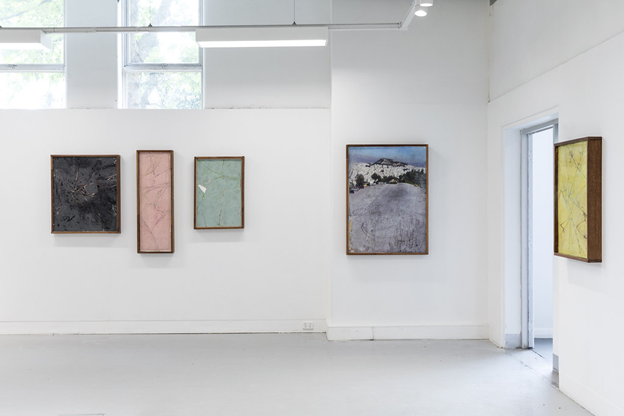
Both artists provide a solution to our equation: Body + _____ = Collective Memory. For Phraser, the equation is completed by presenting her own personal and communal growth and memories in Warm Water. For Pavlidas, it’s collected, painterly memories that reflect upon both a shared adolescence and a possible future.
Amber Stephens is an arts worker based in Naarm (Melbourne). She has completed a Bachelor of Art History and Curating at Monash University, and is passionate about community engagement.
